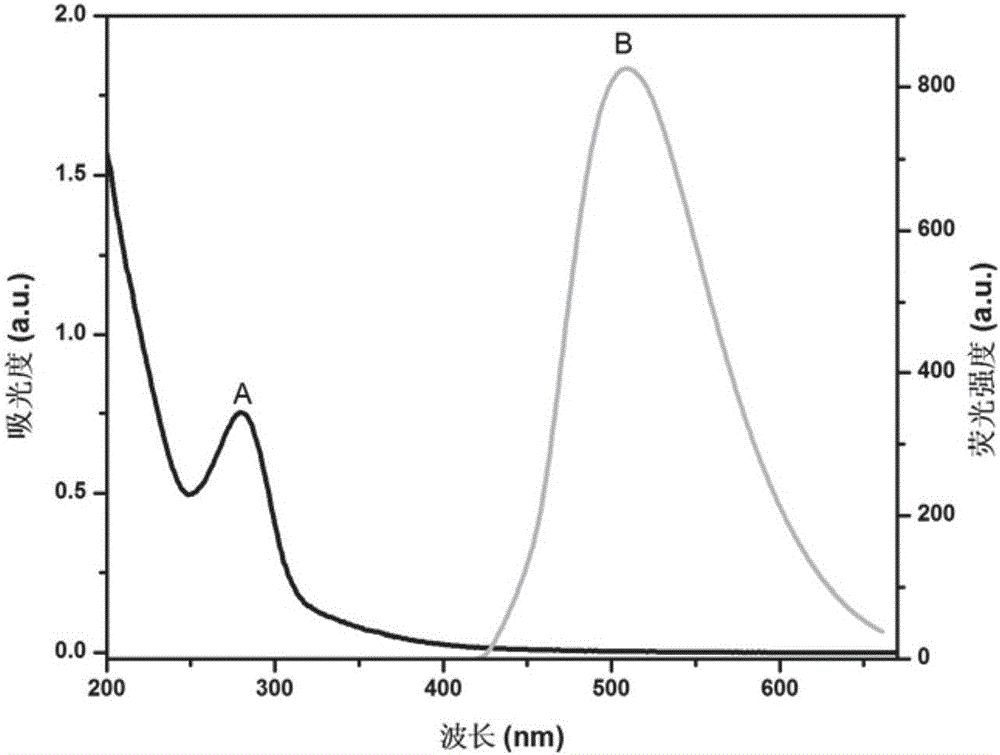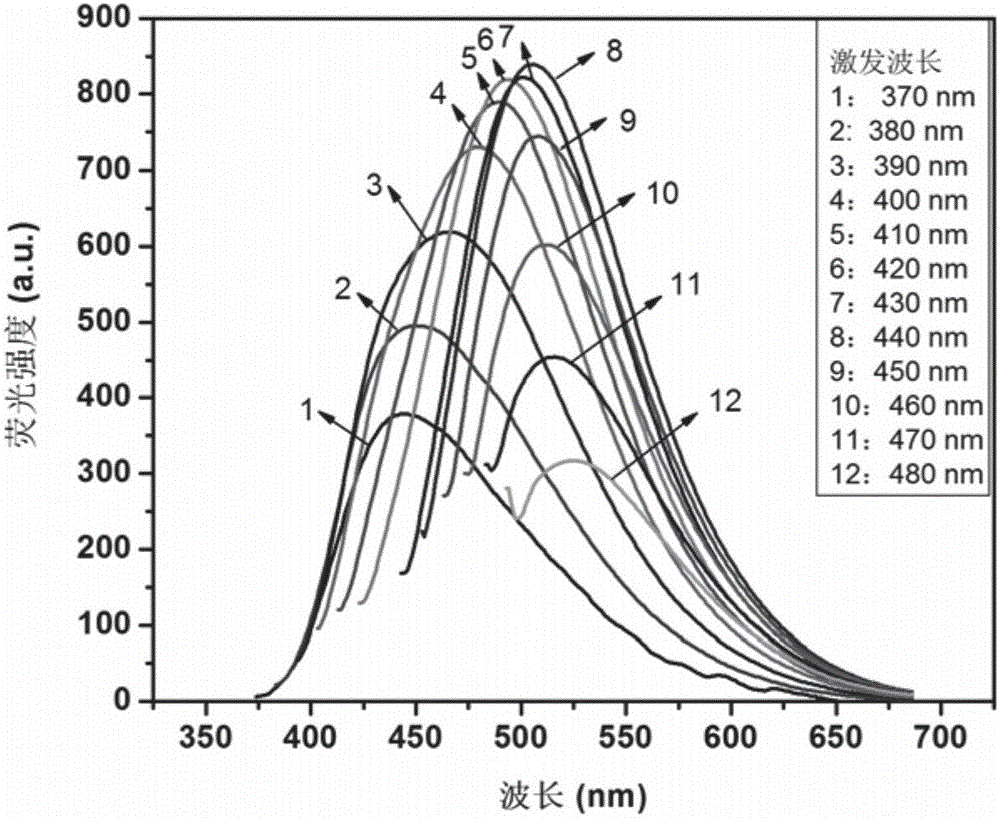Preparation of carbon quantum dots by use of aloe as carbon source and detection method of lemon yellow
A technology of carbon quantum dots and detection methods, applied in chemical instruments and methods, fluorescence/phosphorescence, luminescent materials, etc., can solve the problems of time-consuming, labor-intensive, expensive, and complex tartrazine methods, achieving less time-consuming, cheap instruments, method with good accuracy and reproducibility
- Summary
- Abstract
- Description
- Claims
- Application Information
AI Technical Summary
Problems solved by technology
Method used
Image
Examples
Embodiment 1
[0030] 1. Synthesis of carbon quantum dots (C-dots)
[0031] First, wash the fresh aloe with pure water, add 5g of the washed aloe to a 100mL stainless steel reaction kettle with a polytetrafluoroethylene liner, then add 25mL of ultrapure water, cap the plug and tighten it, and put it into the In a constant temperature blast drying oven, the hydrothermal reaction was carried out at 180°C, and it was taken out after 11 hours. The reaction kettle was naturally cooled to room temperature, and then suction filtered (the filter membrane was a 0.22 μm polypropylene microporous filter membrane). To the filtrate, 20 mL of dichloromethane was added to remove unreacted organic matter, and the upper layer of light yellow aqueous solution (about 20 mL) was collected. Finally, put the obtained light yellow aqueous solution into a dialysis bag with a molecular weight cut-off of 3500 for further purification, clamp the two ends of the dialysis bag and place it in a 5000mL beaker, stir it mag...
Embodiment 2
[0052] 1. Optimization of detection conditions
[0053] 1.1 Investigation of optimal pH
[0054] Add 450 μL of C-dots solution, 400 μL of 100 μmol / L tartrazine solution, and 500 μL of phosphate buffer solution with different pH values into a 5 mL centrifuge tube in sequence, and dilute to 4 mL with ultrapure water, then shake well and balance at 5 °C After 5 min, the fluorescence measurement was performed with 441 nm as the excitation wavelength. By adjusting the pH of 30mmol / L phosphate buffer solution to 4.0-7.5, the effect of pH value on fluorescence quenching efficiency was studied. The result is as Figure 6 As shown, the fluorescence quenching efficiency gradually increases with the increase of the pH value in the range of 4.0 to 6.0, and the quenching efficiency reaches the maximum when the pH value is 6.0. After the pH value exceeds 6.0, the quenching efficiency decreases instead, so pH=6.0 was chosen as the optimum pH value.
[0055] 1.2 Investigation of the opt...
Embodiment 3
[0066] Effects of Common Substances in Food on the Detection of Tartrazine
[0067] Under the optimal conditions selected by the system, that is, a phosphate buffer solution with a pH of 6.0, a volume of carbon quantum dots of 450 μL, a concentration of tartrazine of 5.00 μmol / L, a reaction temperature of 5°C, and an action time of 5 minutes, 500 μmol / L of glucose, lactose, starch, citric acid, tartaric acid, ascorbic acid, NO 2 - 、HCO 3 - , Ca 2+ , Zn 2+ and K + , 250 μmol / L glutamic acid and phenylalanine, 25 μmol / L Fe 3+ and bright blue, 5μmol / L sunset yellow and amaranth, the results are as follows Figure 12 As shown in the figure, (1) glucose, (2) lactose, (3) starch, (4) citric acid, (5) tartaric acid, (6) ascorbic acid, (7) glutamic acid, (8) phenylalanine 、(9)NO 2 - , (10)HCO 3 - , (11)Ca 2+ 、(12)Zn 2+ 、(13)K + 、(14)Fe 3+ , (15) Sunset Yellow, (16) Brilliant Blue, (17) Amaranth, common interfering substances in actual samples have almost no effect on ...
PUM
| Property | Measurement | Unit |
|---|---|---|
| The average particle size | aaaaa | aaaaa |
Abstract
Description
Claims
Application Information
 Login to View More
Login to View More - R&D
- Intellectual Property
- Life Sciences
- Materials
- Tech Scout
- Unparalleled Data Quality
- Higher Quality Content
- 60% Fewer Hallucinations
Browse by: Latest US Patents, China's latest patents, Technical Efficacy Thesaurus, Application Domain, Technology Topic, Popular Technical Reports.
© 2025 PatSnap. All rights reserved.Legal|Privacy policy|Modern Slavery Act Transparency Statement|Sitemap|About US| Contact US: help@patsnap.com



